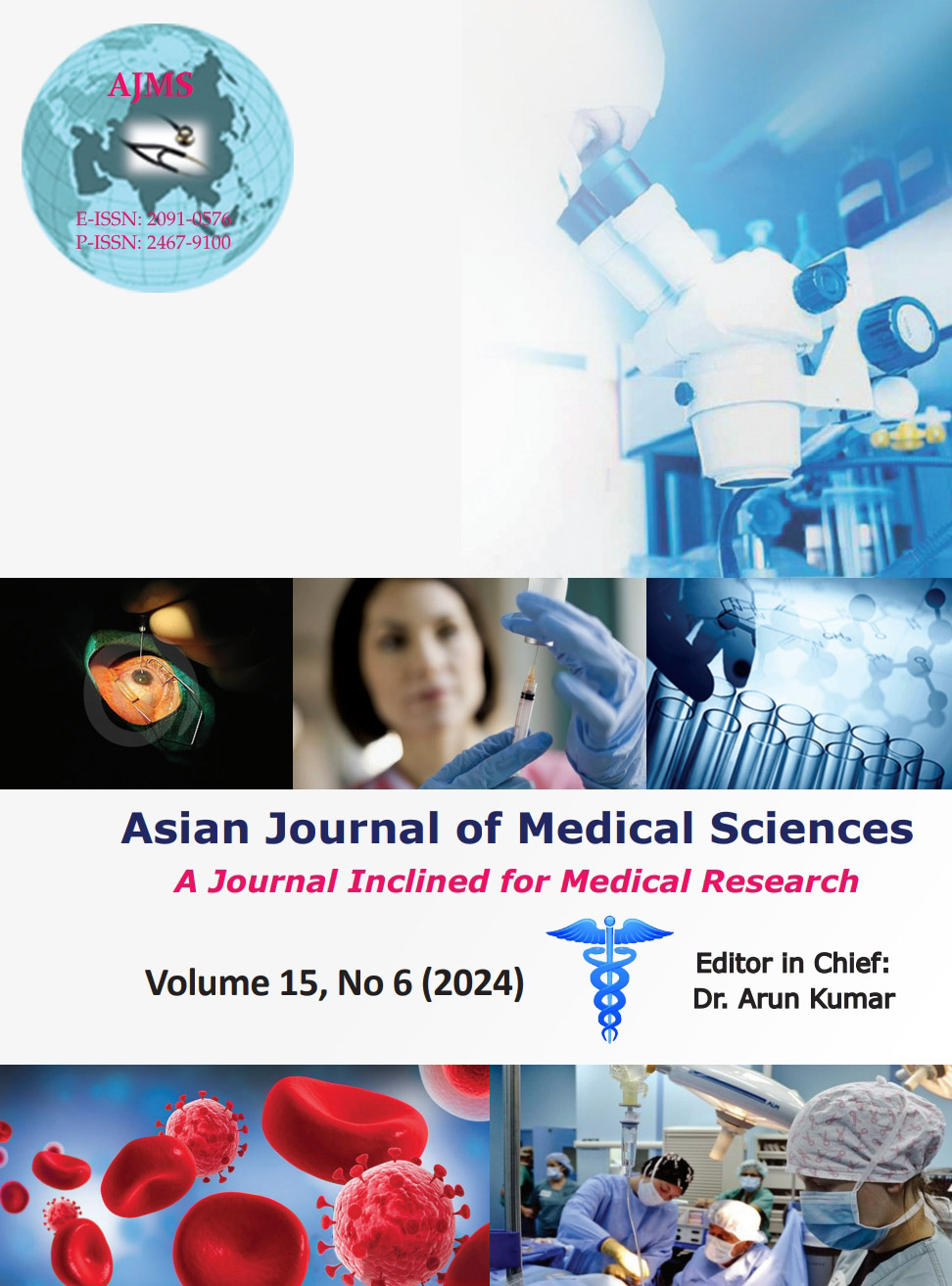Clinicopathological features and risk stratification by the sokal score of patients with chronic myeloid leukemia at a tertiary care hospital in North-East India: A prospective study
Keywords:
Chronic myeloid leukemia; Clinicopathological features; Sokal score, Prospective studyAbstract
Background: Chronic myeloid leukemia (CML) is a hematologic malignancy characterized by excessive growth of myeloid cells and their progenitors. The incidence of CML is approximately 1–2/100,000 population per year.
Aims and Objectives: The aims and objectives of the study are to determine the clinicopathological features of patients with CML and their risk stratification by the Sokal score at a tertiary care hospital in North-East India.
Materials and Methods: This was a single-center prospective study conducted for 5 years (2018–2022). A total of 109 cases diagnosed with CML by qualitative analysis of BCR-ABL1 transcript reverse transcription-polymerase chain reaction were included in the study. The Sokal score was calculated using previously published formulae to classify the patients into different risk groups. The outcome (dead or alive) of CML patients was compared with their individual risk groups using Fisher’s exact test.
Results: Out of 109 CML patients, 73 were males and 36 were females. At the end of the study, 85 patients were alive whereas 24 died. The mean age at presentation was 42.08±15.06 years. The pediatric age group comprises 1.84% of total cases. The percentages of death were higher (79.17%) in patients aged 18–59 years, followed by 20.83% in ≥60 years age group, whereas no death was recorded in the pediatric age group (<18 years). The abdominal hard lump was the most common clinical presentation, followed by abdominal fullness, weakness, and pain abdomen. The Sokal score assigns the majority (66.06%) of patients to the intermediate risk (IR) category, followed by 25.69% and 8.26% in the high-risk (HR) and low-risk (LR) categories, respectively. It was observed that the majority (28.57%) of patients died in the HR group, followed by 20.83% in the IR group and 11.11% in the LR group.
Conclusion: The mean age of CML patients is lower than that observed in many Western countries. The Sokal score assigns the majority of patients to IR category and the maximum death were seen in the HR group.
Downloads
Downloads
Published
How to Cite
Issue
Section
License
Copyright (c) 2024 Asian Journal of Medical Sciences

This work is licensed under a Creative Commons Attribution-NonCommercial 4.0 International License.
Authors who publish with this journal agree to the following terms:
- The journal holds copyright and publishes the work under a Creative Commons CC-BY-NC license that permits use, distribution and reprduction in any medium, provided the original work is properly cited and is not used for commercial purposes. The journal should be recognised as the original publisher of this work.
- Authors are able to enter into separate, additional contractual arrangements for the non-exclusive distribution of the journal's published version of the work (e.g., post it to an institutional repository or publish it in a book), with an acknowledgement of its initial publication in this journal.
- Authors are permitted and encouraged to post their work online (e.g., in institutional repositories or on their website) prior to and during the submission process, as it can lead to productive exchanges, as well as earlier and greater citation of published work (See The Effect of Open Access).




